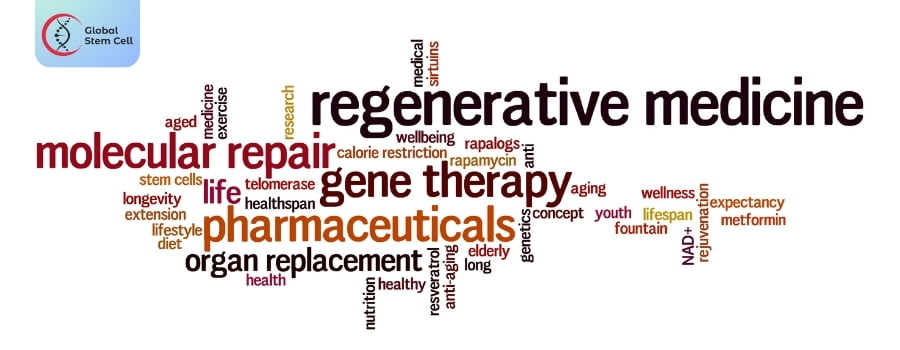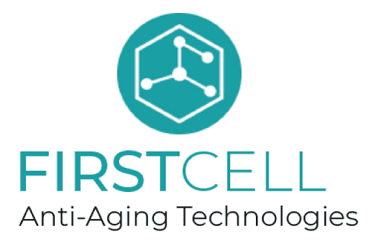
Have you ever heard about the amazing world of regenerative medicine? It’s this cutting-edge field that’s all about helping your body heal itself, and it’s making waves around the globe. But did you know that Regenerative Medicine in Malaysia is really taking off?
Contenido
Yep, that’s right! With its strategic location in Southeast Asia and a booming medical tourism industry, Malaysia is quickly turning into a go-to destination for people seeking top-notch regenerative treatments. Let’s dive into why Regenerative Medicine in Malaysia is the place to be and explore the incredible options available there!
Understanding Regenerative Medicine
Regenerative medicine is a branch of medical science that focuses on repairing, replacing, or regenerating damaged or diseased cells, tissues, or organs to restore normal function. It involves various techniques and technologies to stimulate the body’s natural healing processes and create new tissues and organs.
Key Concepts and Approaches
Terapia con células madre: Stem cells are undifferentiated cells with the potential to develop into different cell types. In regenerative medicine, stem cells can be used to repair or replace damaged tissues. There are two main types of stem cells:
- Embryonic Stem Cells (ESCs): Derived from early-stage embryos, these cells can differentiate into almost any cell type.
- Adult Stem Cells: Found in various tissues, these cells have a more limited differentiation potential but are crucial for tissue maintenance and repair.
Tissue Engineering: This involves creating biological substitutes for damaged tissues. Techniques include using scaffolds made from biocompatible materials to support the growth of new tissue and combining cells and biomolecules to develop functional tissues.
Gene Therapy: Gene therapy involves modifying or replacing defective genes to treat genetic disorders or diseases. It can be used to correct genetic defects, boost the immune system, or induce the production of therapeutic proteins.
Biomaterials and Bioactive Molecules: Biomaterials, such as polymers, ceramics, and metals, can be used as scaffolds to support cell growth and tissue formation. Bioactive molecules, including growth factors and cytokines, can stimulate cellular activities and promote tissue regeneration.
3D Bioprinting: This advanced technology involves layer-by-layer printing of cells and biomaterials to create complex tissue structures. It has the potential to fabricate functional tissues and organs for transplantation.
Applications
- Orthopedics: Regenerative medicine can help repair bone, cartilage, and ligament injuries.
- Cardiology: It can aid in regenerating heart tissue damaged by heart attacks or heart disease.
- Neurology: There is potential for treating neurodegenerative diseases and spinal cord injuries by regenerating neural tissue.
- Dermatology: Skin grafts and wound healing are common applications of regenerative techniques.
- Organ Transplantation: The development of bioengineered organs could reduce the need for donor organs.
The Growth of Regenerative Medicine in Malaysia
Regenerative medicine is experiencing significant growth in Malaysia, driven by advancements in technology, increased investment, and a growing interest in innovative healthcare solutions. The country’s focus on developing its biomedical sector, along with supportive government policies, has created a conducive environment for the expansion of regenerative medicine.
Key Factors Contributing to Growth
- Government Support and Policies:
The Malaysian government has been proactive in promoting the biotechnology and healthcare sectors. Initiatives like the Malaysian Biotechnology Corporation (BiotechCorp) and the National Biotechnology Policy have provided funding, incentives, and regulatory support for the development of regenerative medicine. - Research and Development:
Malaysia boasts a number of research institutions and universities that are actively engaged in regenerative medicine research. These institutions collaborate with international partners, contributing to cutting-edge research in stem cell therapy, tissue engineering, and other regenerative technologies. - Private Sector Involvement:
The private sector plays a crucial role in the growth of regenerative medicine in Malaysia. Companies are investing in the development and commercialization of regenerative therapies, including stem cell banking, regenerative skincare products, and orthopedic treatments. - Regulatory Framework:
Malaysia has established a regulatory framework for the safe and ethical use of stem cells and other regenerative therapies. The Ministry of Health, along with agencies like the National Pharmaceutical Regulatory Agency (NPRA), oversees the approval and regulation of regenerative products and clinical trials. - Medical Tourism:
Malaysia is a popular destination for medical tourism, attracting patients from around the world for various medical treatments, including regenerative therapies. The country’s healthcare infrastructure, skilled professionals, and competitive pricing make it an attractive option for international patients seeking advanced treatments.
Leading Regenerative Medicine Clinics in Malaysia
Here are some of the top clinics in Malaysia that are leading the way in regenerative medicine:
FirstCell Malaysia
FirstCell Malaysia is renowned for its innovative stem cell therapies and comprehensive regenerative medicine services. The clinic specializes in treating a wide range of conditions, including orthopedic issues, neurological disorders, and chronic diseases. With a team of highly skilled medical professionals, FirstCell Malaysia ensures personalized and effective treatment plans for each patient.

Merkel Clinic
Merkel Clinic is a leading name in regenerative medicine, known for its state-of-the-art facilities and advanced treatment options. The clinic offers a variety of regenerative therapies, including stem cell therapy, platelet-rich plasma (PRP) therapy, and tissue engineering. Merkel Clinic’s commitment to research and innovation has made it a top choice for patients seeking cutting-edge treatments.

Cell Malaysia
Cell Malaysia focuses on providing high-quality regenerative medicine treatments, particularly in the areas of stem cell therapy and PRP therapy. The clinic is dedicated to improving patient outcomes through personalized care and the latest medical advancements. Cell Malaysia’s team of experts works closely with patients to develop customized treatment plans that address their specific needs.

Common Regenerative Medicine Treatments Available
In Malaysia, regenerative medicine is gaining popularity as a treatment option for various medical conditions. Common regenerative medicine treatments available in the country include:
1. Stem Cell Therapy
- Autologous Stem Cell Therapy: This involves using a patient’s own stem cells, typically harvested from bone marrow or adipose tissue, to treat various conditions such as osteoarthritis, joint injuries, and degenerative diseases.
- Allogeneic Stem Cell Therapy: Donor stem cells are used for therapeutic purposes, including the treatment of blood disorders, immune deficiencies, and certain types of cancer.
2. Platelet-Rich Plasma (PRP) Therapy
PRP therapy involves injecting a concentrated form of the patient’s platelets into injured tissues to promote healing. It is commonly used for:
- Orthopedic Conditions: Such as tendonitis, ligament injuries, and arthritis.
- Aesthetic Applications: Including skin rejuvenation, hair restoration, and scar reduction.
3. Tissue Engineering and Cartilage Regeneration
- Chondrocyte Implantation: This technique involves culturing a patient’s cartilage cells and implanting them into damaged areas, often used to treat cartilage defects in the knee.
- 3D Bioprinting: Emerging technologies are being explored for creating tissue structures for use in surgical repairs.
4. Bone Marrow Transplantation
Used primarily for treating blood disorders, cancers, and immune deficiencies, bone marrow transplants involve replacing damaged or diseased bone marrow with healthy cells.
5. Skin Regeneration
- Dermal Fillers and Skin Grafts: These are used to treat burns, scars, and other skin conditions.
- Regenerative Skincare Products: Utilizing stem cell extracts and other bioactive compounds to promote skin regeneration and anti-aging.
The Medical Tourism Experience in Malaysia
Malaysia has become a prominent destination for medical tourism, attracting patients from around the world seeking high-quality healthcare at affordable prices. The country’s strategic location, advanced medical facilities, skilled healthcare professionals, and competitive pricing contribute to a comprehensive and appealing medical tourism experience.
- Accredited Hospitals and Clinics: Malaysia boasts several internationally accredited hospitals and clinics, equipped with state-of-the-art technology and adhering to stringent healthcare standards. Many healthcare facilities are accredited by the Joint Commission International (JCI), ensuring high-quality care.
- Affordability and Cost-Effectiveness: One of the main attractions of medical tourism in Malaysia is the cost-effectiveness of treatments. Medical procedures are often significantly cheaper than in Western countries, without compromising on quality. This affordability extends to accommodation, transportation, and other associated costs.
- Strategic Location: Malaysia’s central location in Southeast Asia makes it easily accessible from various parts of the world. The country is well-connected by international flights, making travel convenient for medical tourists.
- Cultural and Linguistic Diversity: Malaysia’s cultural diversity and multilingual population make it a welcoming destination for international patients. English is widely spoken, which helps in communication and coordination between patients and healthcare providers.
- Post-Treatment and Recovery: Malaysia offers a conducive environment for post-treatment recovery, with a range of accommodation options, including luxury hotels and resorts. Many hospitals provide concierge services and offer packages that include medical care, accommodation, and local tours.
How to Choose the Right Regenerative Medicine Clinic?
When choosing the right regenerative medicine provider, consider the following key points:
- Credentials and Accreditation: Ensure the provider and facility are accredited and licensed by relevant medical authorities.
- Experience and Expertise: Check the provider’s experience and specialization in regenerative treatments, including qualifications and years of practice.
- Treatment Options: Verify the range of regenerative therapies offered and whether they align with your specific medical needs.
- Patient Reviews and Testimonials: Read reviews and testimonials from previous patients to gauge the quality of care and patient satisfaction.
- Consultation and Diagnosis: Opt for providers offering comprehensive consultations, thorough diagnosis, and personalized treatment plans.
- Safety and Ethics: Ensure the provider follows ethical practices and prioritizes patient safety, including transparency about potential risks and side effects.
- Technology and Facilities: Evaluate the quality of medical equipment, facilities, and technologies used in treatments.
- Cost and Payment Options: Consider the cost of treatments, payment plans, and insurance coverage. Check for any hidden fees or additional costs.
- Follow-Up Care: Assess the provider’s follow-up care and support services, including post-treatment monitoring and rehabilitation.
- Location and Accessibility: Consider the convenience of the provider’s location, especially if multiple visits or long-term follow-up is required.
Ready to experience the benefits of regenerative medicine? Contact us today to schedule your consultation and start your journey to better health!





